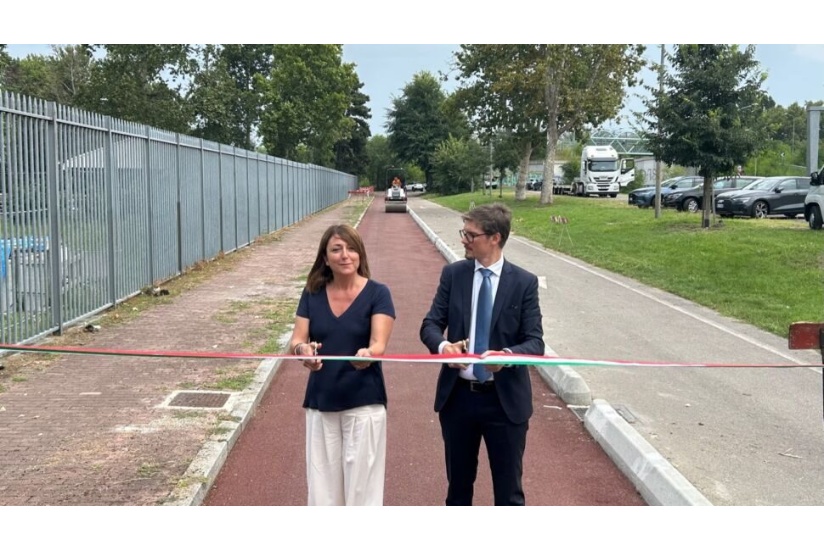At Idroscalo, opened a new bike path more sustainable and safe

A green asphalt, innovative, sustainable and safe, 100% made with Recycled Asphalt Pavement (material recovered from the demolition of old pavements), was opened on two line of bike path running around Idroscalo in Milan.
Against the standard pavements made with traditional hot technologies, this new method 100% made in Italy guarantees notable material savings in the useful lifetime of the bike path.
In detail, it cuts down C02 by 9.6 tons (-70%), equal to the absorbing action of 60.000 trees, and saving 30.000 kWh of electric energy (-67%); moreover, it has been saved 186,8 tons of raw material mined from the caves (-96%), same to 110 cars weight, and nearly 10 tons of bitumen (-94%).
Works interested two pats of the bike path of Segrate Idroscalo Park for a total length of 313 meters, 3 meters width and 4 cm of wear layer thickness, granting Milan the first place as green city even for the two wheels movements.
Metropolitan City of Milan used the technology called Iterlene ACF 1000 HP Green, result of a 3 years research by Iterchimica, an Italian company that operates in over 90 countries, leader in production and development of “green” asphalts products and technologies.
This way the damaged asphalt can be fully reused for a new paving, while keeping the same properties of a traditional produced one. Furthermore, thanks to the use of oxides, the pavement display a red colour with the objective to increase the visibility, grant more road safety and contribute in reducing the urban heat (Urban Heat Island Phenomenon), making possible a drop in temperature of the cycle surface until 18°C less (datas obtained by a combined research of University of Padua and Iterchimica).
In fact, the study proved that the coloured pavements represent a valid way to fight against climate change by limiting the heating in urban areas.
The bike path is a part of “Cambio” project, the Biciplan by Metropolitan City of Milan. The bike path is a part of Line 6, that involves the cities of Milan, Segrate, Pioltello, Rodano, Vignate, Liscate, Truccazzano until Caravaggio, in province of Bergamo (Lombardy). This way the citizens of Milan can ride to Idroscalo park through a protected, well-lighted and safe bike path.
“Its a little work with an enormous symbolic value - declared the Managing Director for Mobility of Metropolitan City, Marco Griguolo – our priority remain investing to create a colossal cycle infrastructure, functional and safe, that will embrace 133 towns in our metropolitan area. This new experimentation moved us in this direction and brought a little closer to our objective, allowing us to intervene on a trait that required an overhaul and modernization.
The climate, air pollution and the necessity to find always greener solutions impose the search of alternative mobility ways with low environmental impact, and always more people are choosing bikes as vehicles, with bike paths developing at inferior speed.
Is to consider the conformation of our centenary/millennial cities, don’t allow everywhere the ideal condition for the development of path for light mobility.
This is also, for the Metropolitan City of Milan, the challenge of tomorrow: there is no innovation without a strategic mobility and harmonious vision with others mobility alternatives. Lets remember, in fact, the bike paths of “Biciplan Cambio” that in 2035 will reach 750 Km and connect with the pre-existent communal bike paths, so a harmonization work is inevitable”.





